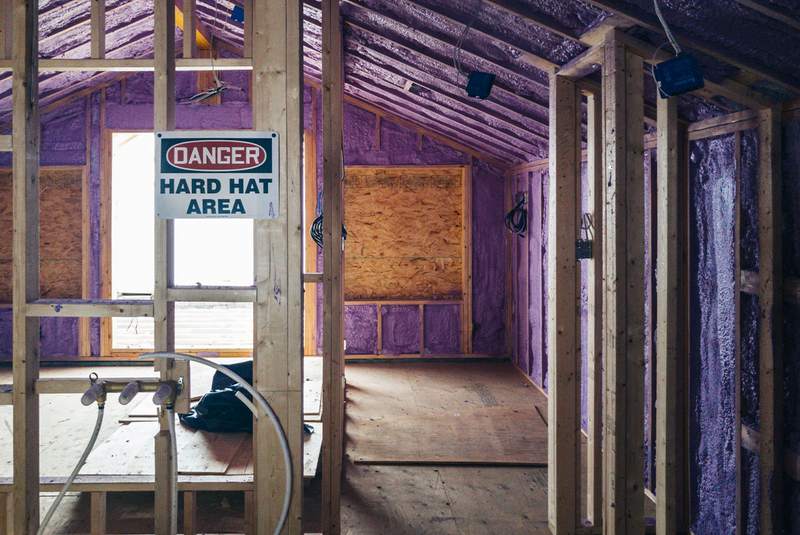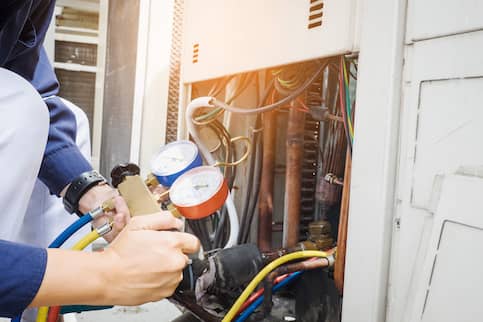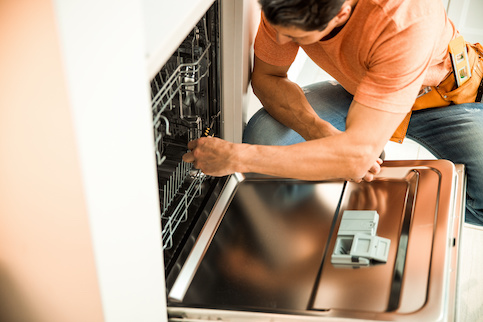In the relentless rhythm of homeownership, the juggling act of maintaining a property can often resemble a chaotic dance. If you’re a homeowner, it’s easy to feel surrounded by tasks demanding your attention. A balance between routine upkeep and the ever-looming potential for costly issues is vital to reducing expenses and enjoying your home without spending every spare second on chores.
Fortunately, a well-structured home maintenance checklist can provide the necessary direction throughout the year. By orchestrating the steps to preserve your home’s condition, the list helps you ward off problems and address pressing seasonal needs. You can combine seasonal, monthly and annual routines that transform the daunting task of home maintenance into a manageable and rewarding routine.
Annual Home Maintenance Checklist
A maintenance checklist for your home is a vital tool in preserving its longevity and preventing potential issues. Regular inspections and upkeep can significantly contribute to avoiding problems like water damage and structural issues, which, if left unattended, could lead to costly repairs. By systematically addressing tasks such as checking for leaks, cleaning gutters and inspecting the roof, you not only enhance the overall safety and comfort of your home but also save money in the long run by preventing larger and more expensive issues from arising.
A proactive approach to home maintenance is an investment that pays off by ensuring your property remains in optimal condition and retains its value. That being said, home maintenance can be daunting because of the amount to do. Fortunately, breaking it down by a shorter timetable can keep your list manageable. Here’s what to accomplish by season, month and year.
Fall Home Maintenance Checklist
Autumn means dealing with leaves and falling temperatures. You can keep your home in top shape with the following tasks.
Interior Home Maintenance
Here’s what to attend to on the inside of your home in the fall:
- Inspect your attic and basement for cracks, water damage and signs of pests.
- Use caulk to seal cracks and gaps from cold air.
- Wash windows and check for damage.
- Get a professional furnace inspection.
- Inspect and clean your fireplace flue.
- Set your ceiling fans to clockwise rotation to funnel warm air downward.
- Test your sump pump by pouring water into the pit until it turns on.
Exterior Home Maintenance
Here’s what to do for exterior home maintenance in the fall:
- Rake and remove leaves from your property.
- Clean your gutters and flush your downspouts.
- Remove and store individual air conditioner units.
- Trim trees to remove dead branches.
- Repair cracks in your driveway and walkway.
- Fall is the best growing season for your lawn, so fertilize and reseed as needed.
- Turn off and insulate water taps.
- Paint or replace siding as needed.
- Remove window screens in anticipation of winter conditions.
Winter Home Maintenance Checklist
The ice, snow and low temperatures take a toll every year. Here’s how to prepare for the extreme conditions.
Interior Home Maintenance
Here’s how to ensure your home is the cozy refuge you look forward to staying in during the cold weather:
- Regularly check pipes and insulation.
- Set traps for rodents that may come inside in winter.
- Insulate doors and windows with caulk or expanding foam.
- Remove sediment from showerheads and faucets.
- Keep the space around radiators clear to prevent fire hazards.
- Drip faucets overnight during extreme cold and keep the indoor temperature at 55 degrees or higher to prevent frozen pipes.
Exterior Home Maintenance
You might not spend as much time outside in the winter, but the exterior of your home braves the elements every day. Here’s how to avoid related damage:
- Check gutters and the roof for potential ice dams.
- Check winter equipment like snow blowers or plows to ensure they don’t need repair.
- Stock up on salt or sand to keep ahead of winter storms and apply it to your driveway and walkway as needed.
- Insulate any outdoor pipes.
- If you have a deck, a sealer can protect it from ice and snow.
- Trim dead tree branches; otherwise, they may fall when weighed down by ice.
- Lower the soil level in planters to avoid overexpansion and cracking.
- Secure handrails for outdoor steps.
Spring Home Maintenance Checklist
As spring arrives, it brings a fresh opportunity to revive and rejuvenate your home after the winter months. A well-planned maintenance routine during this season enhances the curb appeal and safeguards your property from potential issues.
Interior Home Maintenance
As you fling open your doors to welcome in warmer weather, here’s how to refresh the inside of your house:
- Inspect windows and window screens.
- Check the batteries in carbon monoxide detectors and smoke detectors.
- Check your attic for mold and pests.
- Inspect water pipes for minor leaks.
- Switch your ceiling fans to turn counterclockwise and funnel cool air downwards.
Exterior Home Maintenance
Here’s what to do on the outside of your property during the spring:
- Check foundations, walkways and decks for damage from winter storms.
- Check to see if your fences are in need of repair, especially around pools.
- Clean your pool filter and interior and test pump functionality.
- Get a professional air conditioner inspection.
- Climb up on roof or hire a professional to inspect its condition.
- Test water spigots and sprinkler heads.
- Paint your siding as needed.
- Clean gutters and downspouts.
- Wash windows and replace/reinstall screens.
- Test the direction of outdoor water drainage (water should run away from your home).
Summer Home Maintenance Checklist
As summer ushers in hours of sunshine, it’s the perfect time to address your yard and other outdoor priorities while controlling the temperature indoors.
Interior Home Maintenance
While you’ll likely spend more time outside in the summer, there are a few critical matters to address on the inside of your home:
- Flush your water heater to remove any sediment, and check the pressure relief valve.
- Prep and install air conditioner units.
- Pull out your refrigerator and clean the space where it normally sits.
- Wipe ceiling fan blades to prevent the spread of dust and other particles.
- Get your ductwork professionally inspected and cleaned so your HVAC system doesn’t expel debris and mold into the air.
- Clean bathroom fans to reduce air humidity and regrout tiles.
- Wipe away dirt and cobwebs from basement window wells.
Exterior Home Maintenance
Here’s what to take care of outside during the summer:
- Check your garage door and replace batteries in the garage door openers. Oil your garage door apparatus.
- Check siding for damage and consider power washing.
- Check for missing roof shingles.
- Weed your landscaping to head off infestations and increase curb appeal.
- Caulk any exterior cracks to keep out pests.
- Complete outdoor projects such as building a shed or putting in flowerbeds.
See What You Qualify For
Buy A Home
Discover mortgage options that fit your unique financial needs.

Refinance
Refinance your mortgage to have more money for what matters.
Tap Into Equity
Use your home’s equity and unlock cash to achieve your goals.
Annual And Biannual Home Maintenance
In addition to routine tasks every season, you can follow an annual/biannual schedule for other essential maintenance. These items aren’t dependent on the season and are often related to needed repairs or maintenance dates:
- Check and replace your fire extinguishers.
- Vacuum your refrigerator coils for better energy efficiency.
- Perform annual HVAC maintenance.
- Throw out expired non-perishables and freezer items.
- Perform a walkthrough similar to when you first bought the house. Go through every room and the outdoor parts of your property, viewing them with a critical eye.
- Get your carpets professionally cleaned, or rent a cleaning vacuum to do it yourself.
- Clean your freezer coils.
- Examine and clean light fixtures, replacing any dead bulbs.
Monthly Home Maintenance Checklist
Some home maintenance tasks should be repeated every month to keep your house clean and enjoyable to inhabit. You may perform several of these already as part of your established rhythm of homeownership:
- Replace HVAC filters at least every 3 months, but possibly more if you have seasonal allergies or own a pet.
- Check smoke and carbon monoxide detectors.
- Check the functionality of spaces that receive less use, such as the shower, sink and toilet of a guest bathroom.
- Clean your dishwasher filter.
- Clean your dryer vent to prevent lint buildup.
- Trim shrubs and remove dead vegetation from your property.
- Clean your refrigerator by taking out all the items and wiping down every surface.
Must-Have Home Maintenance Tools
Equipping yourself with essential maintenance tools is a wise investment for homeowners, ensuring you can address minor issues promptly and maintain your property efficiently. These tools serve as a homeowner’s first line of defense, allowing you to tackle various tasks without needing professional assistance for minor issues. Investing in these fundamental tools ensures you’re well-equipped to handle day-to-day maintenance tasks and empowers you to keep your home in excellent condition. Here are some must-have tools to keep in your home for frequent use:
- Screwdriver set: Versatile for dozens of household tasks, from replacing light switch faceplates to putting together furniture.
- Adjustable wrench: Handy for loosening and tightening bolts and nuts.
- Tape measure: Essential for accurate measurements during projects.
- Hammer: Useful for a range of tasks, from hanging pictures to small repairs.
- Pliers set: Different types for gripping, cutting and bending.
- Utility knife: Ideal for cutting materials during DIY projects.
- Cordless drill: Versatile and efficient for tightening and loosening screws.
- Drill bits: These allow you to prepare a hole without damaging a screw.
- Level: Ensures accuracy when hanging shelves or pictures.
- Flashlight: Essential for inspecting dark or tight spaces.
- Duct tape: Provides a quick, temporary fix for various issues, such as sealing ducts or cracks.
- Stud finder: Facilitates safe and accurate wall mounting by locating studs behind drywall.
- Nails and screws: A variety of sizes for different repair and construction needs.
- Sander: Smoothens surfaces from siding to wooden decks.
- Precision knife: Offers cutting for tasks too delicate for a typical utility knife.
- Extension cords: Provides flexibility for power tools and equipment.
- Rubber mallet: Can help assemble furniture or flooring without damaging surfaces like a hammer would.
- Bar clamp: Holds materials together securely during glue or assembly work.
- Hex keys: Also known as Allen wrenches, these are essential for assembling furniture and appliances.
- Magnetic parts dish: Keeps small metal parts organized and easily accessible.
- Safety goggles: Protects your eyes during tasks involving dust, debris or chemicals.
- Caulk gun and smoother: Applies and finishes caulking for a professional and tidy seal.
Remember, renting equipment is an affordable solution for infrequent maintenance or if you lack the storage space. Likewise, hiring a professional for larger or specialized tasks, such as tree removal, can be cost-effective and promote safety.
The Bottom Line
A comprehensive annual home maintenance checklist is essential for extending your home’s longevity and preventing potential costly issues. By systematically addressing tasks throughout the seasons, homeowners can enhance safety, comfort and savings in the long run. Whether handling routine upkeep or planning for major projects, a proactive and organized approach to home maintenance is an investment that pays off in the form of a well-maintained, relaxing and valuable home.
Remember, balancing DIY tasks with professional help ensures your home remains in optimal condition year-round.
Find A Mortgage Today and Lock In Your Rate!
Get matched with a lender that will work for your financial situation.

Ashley Kilroy
Ashley Kilroy is an experienced financial writer who writes for solo entrepreneurs as well as for Fortune 500 companies. She is a finance graduate of the University of Cincinnati. When Ashley isn’t helping people understand their finances, you may find her cage-diving with great whites or on safari in South Africa.












